
| Publisher: | New Directions | |
| Genre: | Women, Absurdist, Literary, Fiction | |
| ISBN: | 9780811228879 | |
| Pub Date: | October 2020 | |
| Price: | $12.95 |
| Starred | Fiction |
by Hiroko Oyamada, trans. by David Boyd
In Hiroko Oyamada's intriguing parable-like The Hole, a young childless couple, Asa and Muneaki, trade urban for rural when Muneaki is transferred for work. They end up living rent-free next door to his parents in a conveniently vacated rental house his parents own. While Muneaki commutes--taking their only car--Asa becomes a stay-at-home wife after quitting her temporary job. Asa has little to do beyond housework and cooking. Her mother-in-law, Tomiko, too, is gone all day at work, and her father-in-law is virtually invisible, although less-than-communicative Grandpa is always in the yard watering plants. Tomiko's call for a favor one day sends Asa out to the nearest convenience store--a long walk in the hot summer sun. On the way, she encounters a mysterious animal, falls into a hole, is saved by a neighbor whom she's never met but who seems to know far too much. The money Asa has been given to deposit proves not enough, and her encounter with another stranger will lead to bizarre revelations.
Originally published in 2014 and subsequently awarded Japan's highly coveted Akutagawa Prize, The Hole is Oyamada's second book (after The Factory) to be translated by the award-winning David Boyd. His deft replication of Oyamada's taut, controlled style highlights the building tension as Asa's solitude devolves into a fever dream of inexplicable, unpredictable occurrences. At just over a hundred pages, Oyamada's slender novel belies a multi-layered, complex examination of contemporary disconnect and isolation so chillingly affecting that the surreal quickly turns convincingly plausible, and then all too insistently real. --Terry Hong, Smithsonian BookDragon
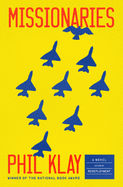
| Publisher: | Penguin Press | |
| Genre: | War & Military, Literary, Political, Fiction | |
| ISBN: | 9781984880659 | |
| Pub Date: | October 2020 | |
| Price: | $28 |
| Fiction |
by Phil Klay
When Iraq War veteran Phil Klay's debut short story collection, Redeployment, won the National Book Award in 2014, it was clear that a talented new writer had appeared on the literary scene. The promise revealed in that work now is fulfilled in his first novel, Missionaries, a dark and complex story of the U.S. involvement in foreign conflicts most of America's citizens know, and often care, little about.
Missionaries focuses on the lives of four central characters--Abel, a young Colombian who enters the shadowy world of a paramilitary group after his village is destroyed by guerrilla forces; Mason Baumer, a Special Forces medic serving in Afghanistan; Juan Pablo Pulido, a lieutenant colonel in the Colombian army; and Lisette Marigny, an American journalist based in Kabul.
After a series of sections that range in time and territory from Colombia in the mid-1980s to Afghanistan in 2015--narrated by each member of this quartet in the first person--the novel shifts to a third-person point of view for its second half, as the lives of these characters intersect in the war-ravaged South American nation.
Even as he delivers a tightly controlled, propulsive story of shifting loyalties and outright betrayal, one that at times features graphically described violence, Klay digs deeply into the minds and motivations of his characters. He reveals how, though their paths to engagement in a world of never-ending conflict may have differed, they all find themselves unable to escape its pull. Readers looking for moral clarity won't find it here, as Klay scrupulously avoids assigning praise or blame to anyone residing in this ethically ambiguous universe. --Harvey Freedenberg, freelance reviewer

| Publisher: | Tin House | |
| Genre: | Psychological, Feminist, Space Exploration, Fiction, Science Fiction | |
| ISBN: | 9781951142100 | |
| Pub Date: | October 2020 | |
| Price: | $15.95 |
| Fiction |
by Anneliese Mackintosh
Bright and Dangerous Objects, the U.S. debut by British author Anneliese Mackintosh, is a hypnotic exploration of what it means to want. Deep-sea diver Solvig should be content with her loving boyfriend, James. But when Solvig hears about the daring Mars Project, which promises to send a mission to colonize Mars, she can't get the idea out of her mind. While she agrees to try for a baby with James, Solvig simultaneously applies for the Project, keeping her application a secret as she rises among the contestants. All the while, Solvig continues to go on dives, hoping the time away under miles of ocean will help her articulate what she wants from life.
Sparse but powerful, tense but precise, Mackintosh's prose is perfectly paired to her subject matter. Like a throat clenched before a cry, the writing, and particularly the dialogue, demonstrates the massive weight of feeling held just under the surface of Solvig's cool and distant demeanor. Solvig's adopted mantra of "pain is part of the process" becomes a theme for the book, as readers empathize with Solvig's self-loathing, loneliness and indecision. Nevertheless, it is the pressure of these barely restrained feelings that ultimately allows for the novel's bittersweet, glittering conclusion, which promises nothing but manages a much-desired catharsis all the same. Readers, like Solvig, float through the novel wondering, "How are you ever supposed to know what you want?" But by the end, Mackintosh proves she has known what Solvig and readers wanted all along. --Alice Martin, freelance writer and editor
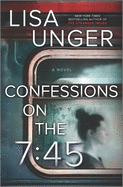
| Publisher: | Park Row | |
| Genre: | Psychological, Domestic, Crime, Thrillers, Fiction | |
| ISBN: | 9780778310150 | |
| Pub Date: | October 2020 | |
| Price: | $27.99 |
| Mystery & Thriller |
by Lisa Unger
In Lisa Unger's ingenious psychological thriller Confessions on the 7:45, two women meet and start chatting on a train. Shortly thereafter, one woman's life is devastated in the most shocking fashion, while the other is finally set free from the burdens of a traumatic childhood.
Unger (Heartbroken; The Stranger Inside) has carved an impressive niche for herself, lauded for her crime novels and suspenseful thrillers. In Confessions on the 7:45, she combines these genres into a wickedly complex mystery featuring a missing nanny, a stranger with a grotesque sense of justice and a retired detective with a decades-old cold case to solve. The story pivots back and forth in time, centered on seemingly unconnected characters Selena and Pearl.
Selena has an Instagram-ready life, complete with a gorgeous family and a dream job in Manhattan. Even Selena's nanny, Geneva, is impeccable. Teenage Pearl lives a bookish life in the shadow of her larger-than-life mother, Stella, a woman distracted by a string of unstable boyfriends. Stella's latest is different, though, and connects with Pearl on a cerebral level, taking the young woman under his wing. Unger offers multiple character perspectives for Stella's and Pearl's stories, setting them up for a spectacular collision that forms the backbone of this slow-burning thriller.
Confessions on the 7:45 is a brilliant study of characters as damaged on the inside as they are perfect on the outside, populated with enigmatic female protagonists that will haunt readers long after the story is over. --Shahina Piyarali, writer and reviewer
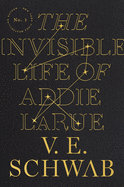
| Publisher: | Tor | |
| Genre: | Fantasy, Literary, Fiction, Historical | |
| ISBN: | 9780765387561 | |
| Pub Date: | October 2020 | |
| Price: | $26.99 |
| Science Fiction & Fantasy |
by V.E. Schwab
A young woman is cursed to live hundreds of years in a world that does not remember her in The Invisible Life of Addie LaRue, V.E. Schwab's enthralling novel of history, philosophy and magic.
"What is a person, if not the marks they leave behind?" Desperate for a life beyond her 18th-century French village, Adeline (Addie) LaRue prays to the old gods for time and independence. Addie is then granted youthful immortality with a terrible price: she "slips from the minds of others with the slightest push.... Unable to leave a mark on anyone, or anything." Forgotten by all who meet her, she is unable to write, draw or even say her own name. Though she cannot tell her story, Addie lives an extraordinary life spanning 300 years, surviving in defiance of her curse and learning to leave subtle imprints through the creations of others in her wake. "I can't wield a weapon or make someone remember. But art... is about ideas. And ideas are wilder than memories." Then, one day, she meets someone who changes everything with three impossible words: "I remember you."
In The Invisible Life of Addie LaRue, fantasy author V.E. Schwab (Shades of Magic trilogy) has created a remarkable, genre-defying epic of a woman fighting to thrive in a world that denies her existence. Schwab's intoxicating characters and storytelling shine as she weaves hope, despair and resilience through alternating chapters of Addie's past (beginning in France, 1714) and present (New York City, 2014). Fans and newcomers alike will be absorbed by Schwab's gripping exploration of what it means to exist in the world. --Jennifer Oleinik, freelance writer and editor
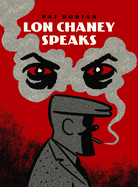
| Publisher: | Pantheon | |
| Genre: | Biography & Autobiography, History & Criticism, Biography & Memoir, Film, Nonfiction, Entertainment & Performing Arts, Comics & Graphic Novels, Performing Arts | |
| ISBN: | 9781524747435 | |
| Pub Date: | October 2020 | |
| Price: | $25 |
| Graphic Books |
by Pat Dorian
For his graphic novel Lon Chaney Speaks, Pat Dorian created a cluster of mock movie posters, one of which says of Chaney, "The mystery star of the silent screen becomes more amazing, more surprising in this gripping all-talking story." An unscrupulous book reviewer might steal that line to describe Lon Chaney Speaks.
"My childhood was good," Chaney reports in Dorian's book, "although others might consider it unusual." His parents were deaf, so he and his siblings used sign language until "we could speak with our eyes." With this in his actor's tool belt, Chaney left Colorado Springs at 21 to tour with a vaudeville troupe. On the road he met the first woman he would marry, became a father and struggled with money and with his hard-drinking wife, whose scandal-making suicide attempt cost Chaney his job. He reported to Universal Studios and spent five years taking any acting gig on offer. To make himself more castable, Chaney mastered the arts of disguise ("I invested a small fortune in wigs") and makeup application, earning the sobriquet "The Man of a Thousand Faces." Finally he landed the role of Quasimodo--"a lovestruck bastard who can't catch a break"--in 1923's The Hunchback of Notre Dame. The rest is celluloid history.
Fittingly, Dorian's illustrations--loose but sure-handed lines on yellowed-newsprint-like backgrounds, with spot color and quip-filled dialogue balloons--recall old-time comic strips. Lon Chaney Speaks is a lovingly crafted ode that brings readers tantalizingly closer to knowing the famously private Hollywood legend. --Nell Beram, author and freelance writer

| Publisher: | Pegasus Books | |
| Genre: | Biography & Autobiography, Women, Wicca), Witchcraft (See Also Religion, Royalty, Great Britain - Norman Conquest to Late Medieval (1066-1485), Europe, Body, Mind & Spirit, History | |
| ISBN: | 9781643133324 | |
| Pub Date: | September 2020 | |
| Price: | $27.95 |
| Biography & Memoir |
by Gemma Hollman
In Royal Witches: Witchcraft and the Nobility in Fifteenth-Century England, historian Gemma Hollman considers a point at which two subjects of women's history intersect: the political roles played by royal women in medieval and early modern Europe, and in witch trials. The result is a fascinating story of the power and vulnerability of female royalty.
Hollman explores the lives of four women who married into England's royal family in the turbulent period between Henry IV's usurpation of the British throne and the Wars of the Roses: Joan of Navarre, Eleanor Cobham, Jacquetta of Luxembourg (later Jacquetta Woodville) and Elizabeth Woodville. She tells the story of each woman's marriage. (Unusual among European nobility at the time, all four marriages were love matches.) After establishing the political context of those marriages, Hollman demonstrates how accusations of witchcraft were used to attack each woman and, in two cases, her husband's political position as well.
Hollman does an excellent job of demonstrating how accusations of witchcraft lead to the falls of Joan, Eleanor and Jacquetta and how those accusations, and each woman's defense, relate to one another. The final section of the book, which deals with the better-known history of Elizabeth Woodville's life as Edward IV's wife and the tragic dissolution of her family after his death, is well told, but less clearly linked to Hollman's central argument. Despite this unevenness, Royal Witches makes an intriguing addition to the growing genre of books dealing with royal women in medieval Europe, like Helen Castor's She-Wolves and more recently Kelcey Wilson-Lee's Daughters of Chivalry. --Pamela Toler, blogging at History in the Margins
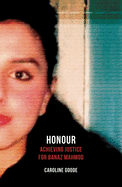
| Publisher: | Oneworld Publications | |
| Genre: | Social History, Religion, History, Social Science, Religion, Politics & State, Political Science, True Crime, Education, Sociology, Law Enforcement, General, Organized Crime, Sociology of Religion, Criminology | |
| ISBN: | 9781786075451 | |
| Pub Date: | October 2020 | |
| Price: | $17.95 |
| Social Science |
by Caroline Goode
"The date was 26 January 2006 and my life was just about to change." Caroline Goode found herself acting DCI of Team 16 of London's Metropolitan Police Force and Serious Crime Command by default. Determined to prove herself as a new and only female detective chief inspector, her first case started without even a body or crime scene.
Banaz Mahmod, an Iraqi Kurdish woman, was reported missing by her boyfriend Rahmat. They began seeing each other after Banaz left her arranged marriage. Goode was concerned from the jump. While adults go "missing" for all kinds of reasons, this case had obvious aggravating factors. Banaz's family insisted all was hunky-dory. But Banaz had repeatedly gone to the police for help. She reported being beaten and raped by her husband, that her uncle had threatened to kill her and that her father had attempted to kill her. She even prepared a list of those who wished her harm.
While more is known about honor killings now, the MPF was not aware of them at the time. During the course of the years-long journey for justice for Banaz, Goode learned and began educating others, and eventually received the Queen's Policing Medal for leading the operation and her work raising awareness about honor-based violence. Honour is the story of her quest. Written in Goode's straightforward reporting style, Honour nonetheless reads like great fiction, heavily investing the reader in Banaz's plight. Horrifically, it is not fiction, but the worst of true stories to which witness should be borne. --Lauren O'Brien of Malcolm Avenue Review
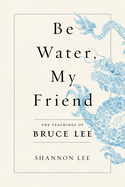
| Publisher: | Flatiron | |
| Genre: | Self-Help, Personal Growth, Biography & Autobiography, Martial Arts, Personal Memoirs, General, Sports & Recreation, Motivational & Inspirational, Sports | |
| ISBN: | 9781250206688 | |
| Pub Date: | October 2020 | |
| Price: | $25.99 |
| Psychology & Self-Help |
by Shannon Lee
Motivational speaker Shannon Lee opens this uplifting, thoughtful and empowering guide to self-actualization by admitting, "I have no expertise in anything other than Bruce Lee." While she truly is an expert on her late father, she is also a warm, patient and insightful guide to his philosophical concepts. Shannon Lee builds Be Water, My Friend on Bruce Lee's extensive but elliptical philosophical writings and expands upon them. He intentionally wrote in generalities in the same way he created the martial art of jeet kune do (a technique that emphasized formlessness and non-telegraphic movement) because he wanted participants to engage their mind rather than practice rote drilling. Likewise, in his philosophy, he wanted his words to awaken thoughts in others. Shannon Lee's modern-day elaborations are pithy, clear and helpful.
Bruce Lee once wrote, "The good life is a process, not a state of being. It is a direction, not a destination." Be Water, My Friend reminds readers to embody the quality of fluidity in life. Lee adopted the term "choiceless awareness" from one of his favorite philosophers, Jiddu Krishnamurti; the idea is to be aware of everything happening around and within you without making a premature choice or judgment that will shade or alter the experience. Although the book contains plenty of helpful mantras ("Pessimism blunts the tools you need to succeed"), it also offers concrete tools to help create a centered sense of purpose, bringing peace of mind and joy.
Shannon Lee offers in Be Water, My Friend an empowering and fascinating self-help book that blends her father's biography and philosophies. --Kevin Howell, independent reviewer and marketing consultant
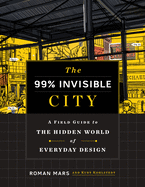
| Publisher: | Houghton Mifflin Harcourt | |
| Genre: | Design, History & Criticism, Architecture, Buildings, Reference, Landmarks & Monuments, Curiosities & Wonders, Trivia | |
| ISBN: | 9780358126607 | |
| Pub Date: | October 2020 | |
| Price: | $30 |
| Starred | House & Home |
by Roman Mars, Kurt Kohlstedt
For 10 years, the mellifluously voiced Roman Mars has hosted 99% Invisible, a podcast devoted to "all the thought that goes into the things we don't think about--the unnoticed architecture and design that shape our world." With his first book, Mars and co-author Kurt Kohlstedt bring hidden elements of the city to life for the inveterate urbanist or the simply curious.
In The 99% Invisible City, readers will discover the meaning behind the mundane: color-coded utility markings that look like graffiti are indicative of underground pipes and wires (beware of yellow, a gas line is below). There are engineering marvels, like the ventilation system for New York City's Holland Tunnel, which incorporates several nearby buildings equipped with fans that replace all of the tunnel's air every 90 seconds. Water fountains, which now quench the thirst of pedestrians on a stroll, first appeared during the cholera outbreak in 19th-century London; these so-called "temperance fountains" became the only safe alternative beverage to alcohol. And those inflatable dancing figures gracing car dealerships everywhere? They're of Caribbean origin and were part of the 1996 Olympics before becoming omnipresent advertising icons.
While architects, engineers and other professionals play a major role in urban design, so do ordinary people. A piece of public property in Oakland was a dumping ground until a resourceful resident installed a Buddha statue. And sidewalks became more accessible thanks to the Rolling Quads, a group of Berkeley students in wheelchairs who created their own curb cuts with sledgehammers, helping launch the modern disability rights movement. The 99% Invisible City is a delight for the "beautiful nerd" in everyone. --Frank Brasile, librarian
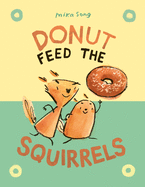
| Publisher: | Random House Graphic | |
| Genre: | Animals, Humorous Stories, Humorous, Juvenile Fiction, Comics & Graphic Novels | |
| ISBN: | 9781984895837 | |
| Pub Date: | September 2020 | |
| Price: | $12.99 |
| Starred | Children's & Young Adult |
by Mika Song
Burnt pancakes and a rejected barter inspire two chummy squirrels to stage an elaborate doughnut heist that ends with treats for all in Mika Song's delightful graphic novel series opener, Donut Feed the Squirrels.
After Norma's breakfast plans end inedibly, she and fellow squirrel Belly follow the luscious scent of crispy sugar to find a doughnuts-on-demand food truck in their urban park. Eager to feed their gathered friends, Norma and Belly collect chestnuts to trade for the treats. When the truck's driver shoos them away, the rejected rodents enlist the help of Gramps and Little Bee to execute an improbable treat-stealing caper. Following a not-so-clean getaway, the team returns laden with doughnuts for a party that leaves the neighborhood squirrels stuffed and sated. Meanwhile, the cantankerous chef finds in cleaning up the squirrels' mess that the chestnuts made an inspired offering after all.
Squat Belly plays the accommodating sidekick to angular Norma, the mastermind of their operation. Five well-paced chapters allow for ample character development and feature a range of panel layouts to hold visual interest, with minimal text in clearly designated speech bubbles. Subtle humor and witty puns, including a dough-covered Belly remarking, "I've never been batter," suit the gentle humor of beginning readers. Song's (illustrator of A Friend for Henry and Harry and Claire's Amazing Staycation) loosely inked lines and washes of color lend the story a relaxed feel, the warm palette and golden tones suiting the furry critters and their natural surroundings. Nestled under a tree, content, their prized snack tasting "like sunshine and hugs," we leave the two friends hungry to see where the next story leads them. --Kit Ballenger, youth librarian, Help Your Shelf
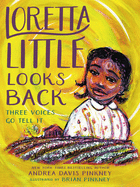
| Publisher: | Little, Brown Books for Young Readers | |
| Genre: | People & Places, United States - African-American, Family, United States - Civil War Period (1850-1877), Juvenile Fiction, Historical, Multigenerational | |
| ISBN: | 9780316536776 | |
| Pub Date: | September 2020 | |
| Price: | $17.99 |
| Children's & Young Adult |
by Andrea Davis Pinkney, illust. by Brian Pinkney
"So name it what you want. Call this oration. Truth-talking. Preaching. Speechifying. Testimony. Recollection." Indeed, Loretta Little Looks Back, the vivid tale of one Black family's multi-generational experience living as sharecroppers in Mississippi, feels distinctly more aural than written. Coretta Scott King Award winner Andrea Davis Pinkney (Martin Rising) uses three vignettes to recount chronologically the triumphs and tribulations of Loretta, Roly and Aggie B. Little.
The opening scene is told by Loretta, who sets the tone for the struggling Black family living in poverty on white people's land. Her adopted brother, Roly, follows, his perspective providing an amiable yet stoic bridge between Loretta's harrowing tale and that of his tenacious daughter, Aggie B. The book draws to a close with the three reunited and resolute to continue the fight for equality.
The lyricism Pinkney infuses into each character's monologue-like exposition well suits a middle-grade audience, presenting in an age-appropriate format difficult subject matter such as the violence surrounding the civil rights movement. The book also contains extensive backmatter--an author's note, an artist's note, "real-life notables" mentioned in the book and explanations of "The Dramatic Form" and "Sharecroppers in the American South." Coretta Scott King Illustrator Award-winner and Caldecott Honor artist Brian Pinkney (who illustrated Martin Rising) "drew inspiration from the gels used in theatrical lighting" and used opaque watercolors and India inks to enhance the dimension and emotion in the characters. His illustrations provide an artistic levity to the intense subject matter, gently reminding readers that there is beauty to be found even while dealing with life's hardships. --Rachel Werner, Hugo House and the Loft Literary Center faculty
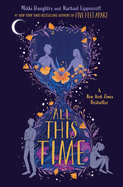
| Publisher: | Simon & Schuster Books for Young Readers | |
| Genre: | Death, Grief, Bereavement, General (see also headings under Social Themes), Romance, Contemporary, Family, Social Themes, Young Adult Fiction | |
| ISBN: | 9781534466340 | |
| Pub Date: | September 2020 | |
| Price: | $18.99 |
| Children's & Young Adult |
by Mikki Daughtry, Rachael Lippincott
Mikki Daughtry and Rachael Lippincott, who wrote the movie-to-novel phenomenon Five Feet Apart, team up again for an emotionally charged contemporary romance that is as much about finding self-worth as it is about falling in love.
After three months of recuperating physically and mentally from a car accident that killed his long-term girlfriend, Kim, 18-year-old Kyle is trying "to find a way to live without leaving her behind." This proves difficult because everywhere he goes he thinks he either sees Kim or hears her voice, rendering him unable to do anything but grieve. Then he meets Marley, who's mourning the loss of her twin sister. Together they work through their grief, finding understanding, empathy and something more than friendship. As Marley says, though, "Something this good can't last," and it isn't long before Kyle's life is once again derailed.
In All This Time, Daughtry and Lippincott tell a compelling coming-of-age story about teenagers navigating a world without their loved ones. The authors examine the inner feelings of those left behind after someone's death, providing insight into how people move forward and redefine who they are without "their person." Using flawed characters flailing to become whole again, Daughtry and Lippincott show the long, difficult road to healing and self-growth. Kyle's and Marley's journeys are both filled with moments of heartbreak and joy, which are conveyed through painful memories, clarifying self-discoveries and revealing conversations. All This Time is more than just a romance; it is a lesson in working through trauma and tragedy to understand oneself better. --Lana Barnes, freelance reviewer and proofreader